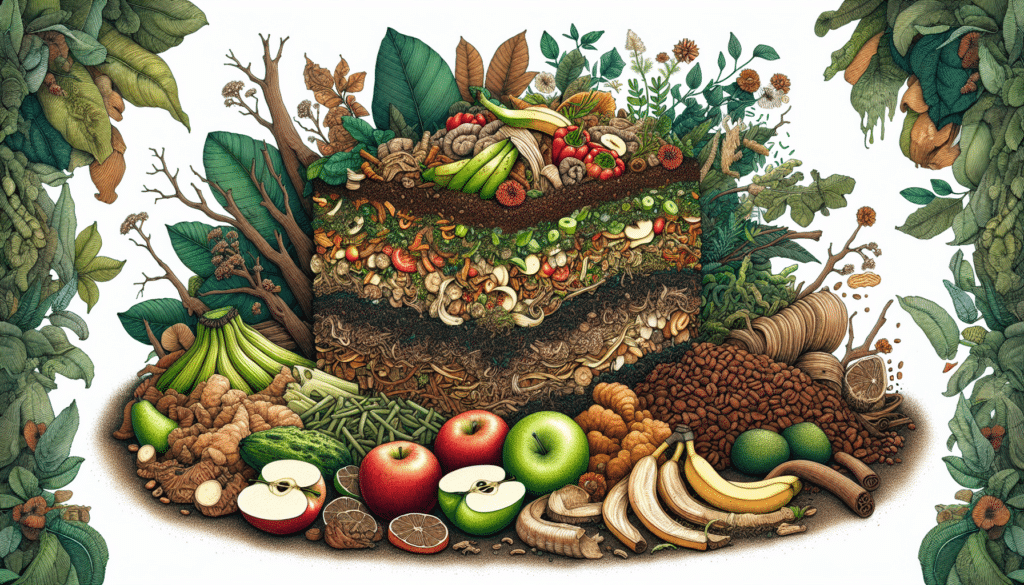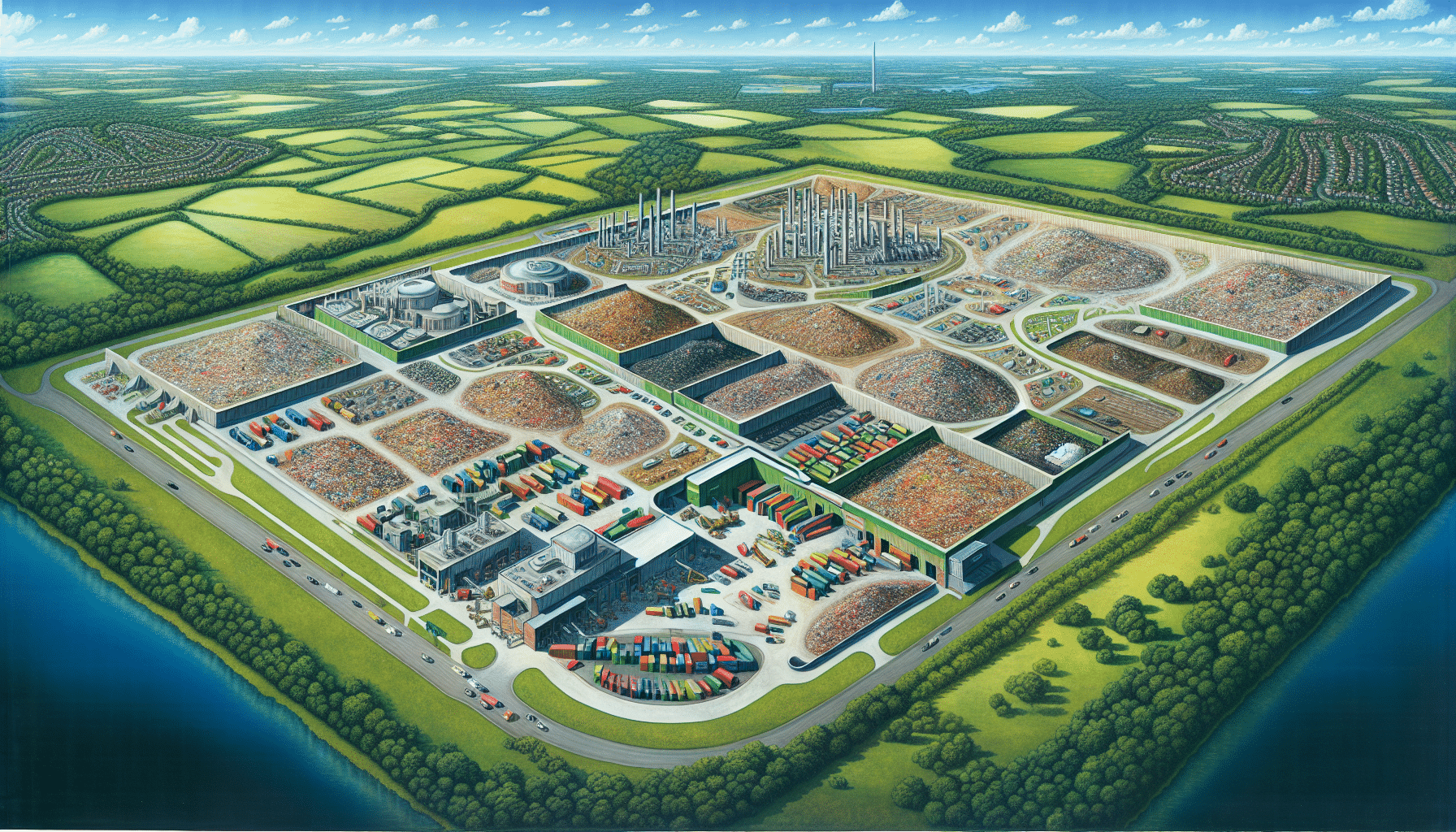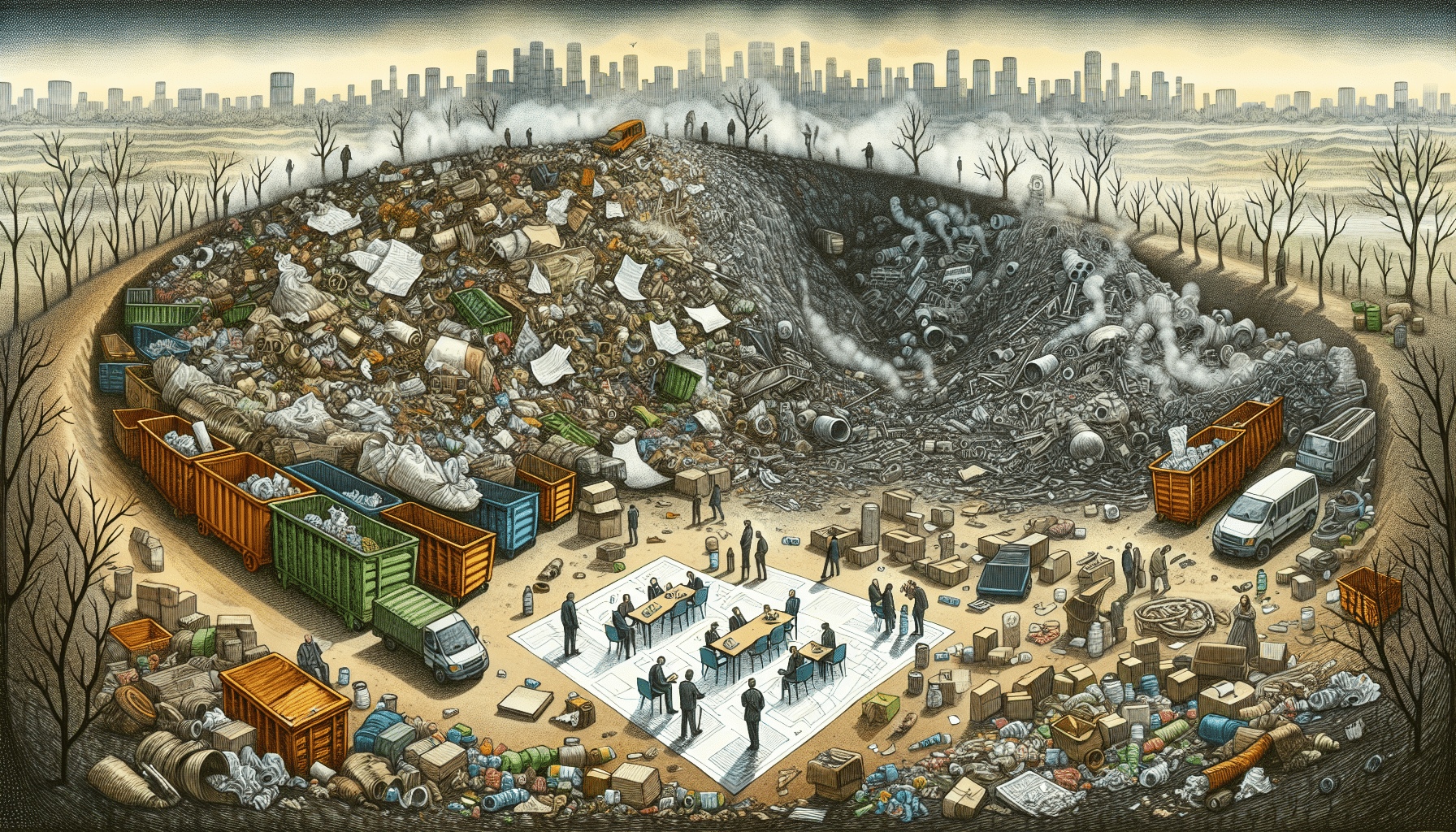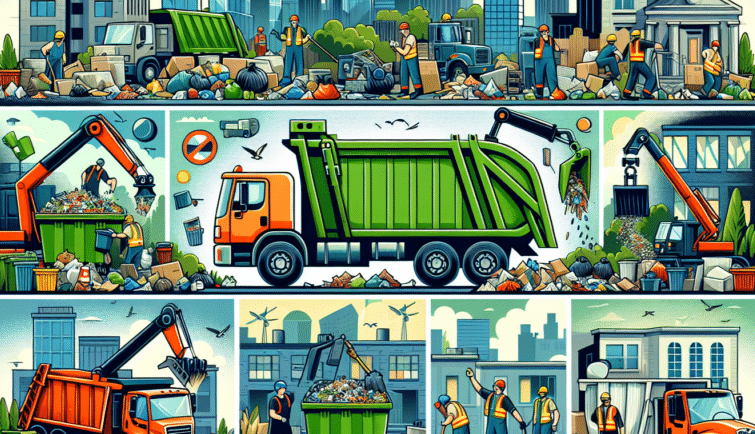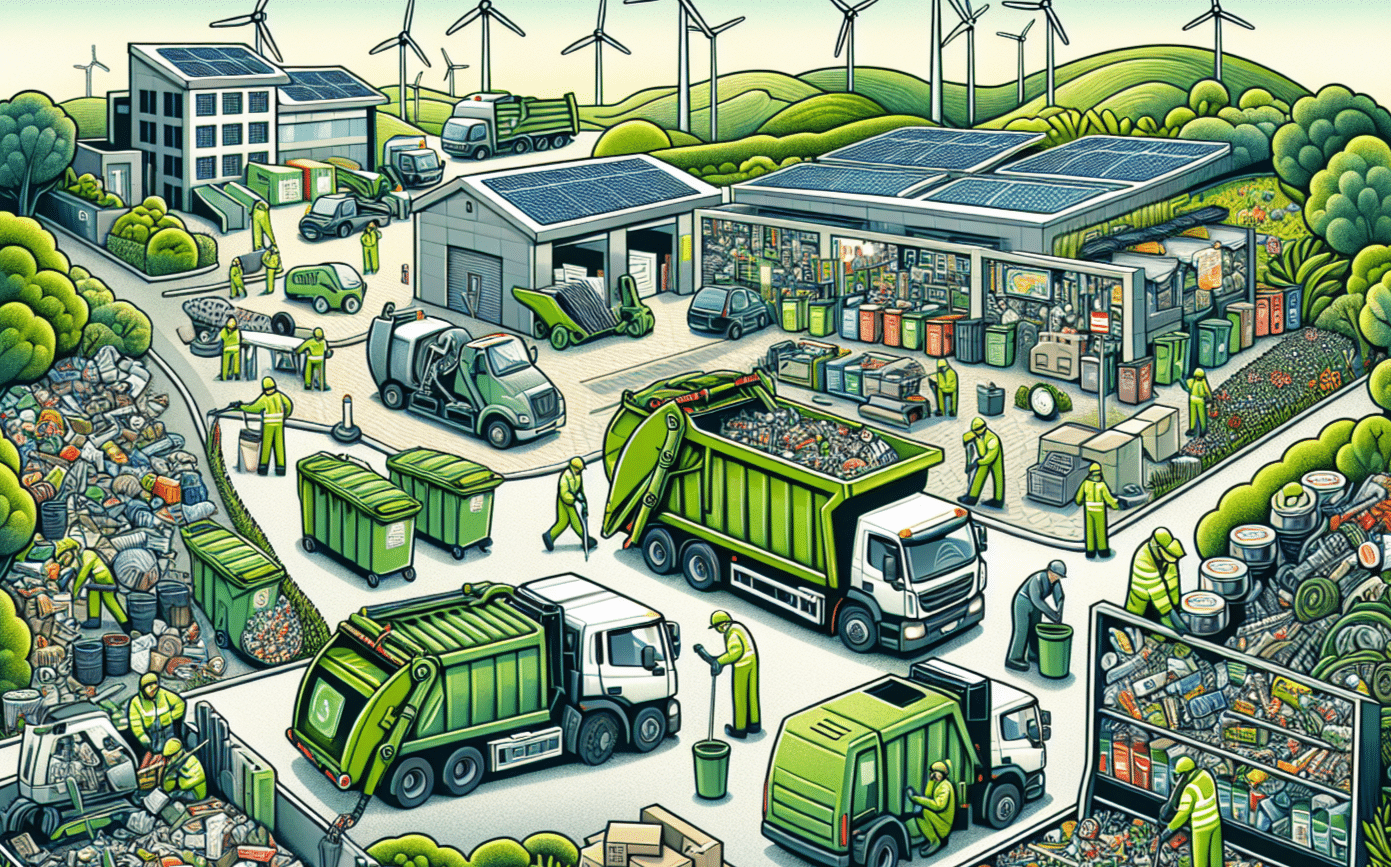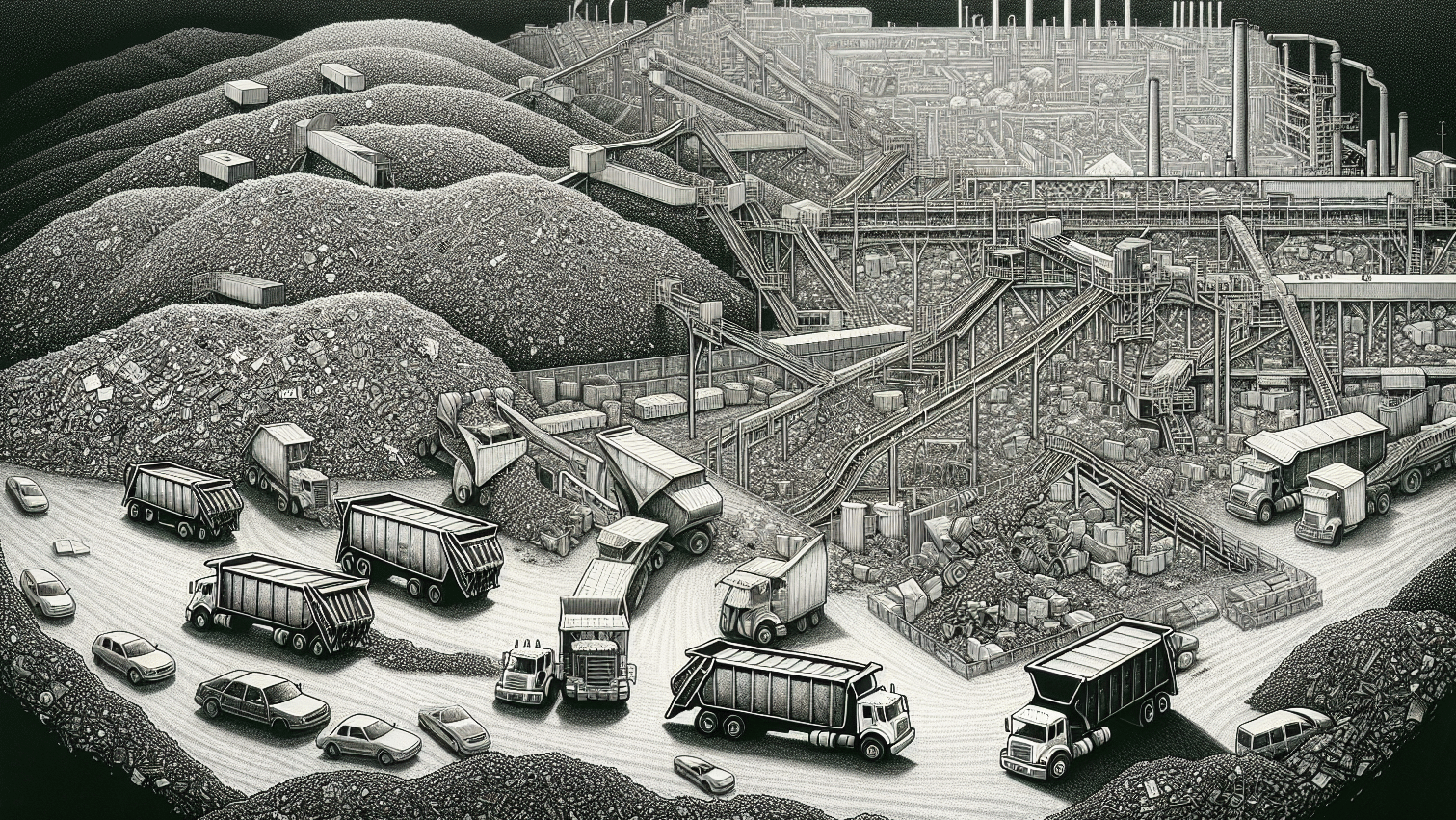City composting allows urban dwellers to turn food scraps and yard waste into valuable compost, even with limited space. This guide will help you understand why city composting matters, how to get started, and how to maintain your compost pile.
Key Takeaways
- City composting reduces landfill waste, curtails methane emissions, and produces nutrient-rich compost that enhances soil health and reduces the need for chemical fertilizers.
- Successful urban composting requires choosing the proper compost bin, effectively collecting and managing food scraps, and understanding the balance of compost materials to ensure efficient decomposition.
- Challenges such as limited space, unpleasant odors, and pest attraction in urban composting can be addressed by using Bokashi bins, maintaining proper aeration and moisture levels, and participating in community composting programs or curbside composting services.
Why City Composting Matters
Have you ever considered what happens to the banana peels, coffee grounds, and uneaten salad you discard? In a bustling metropolis, food scraps and yard waste often end up in landfills, where they decompose anaerobically, producing methane—a potent greenhouse gas. But what if you could capture these organic bits and pieces, transforming them into a valuable resource? That’s the magic of city composting. Urbanites who compost can play a major role in reducing landfill waste, curtailing methane emissions, and producing nutrient-rich compost that contributes to healthier gardens and lawns.
The beautiful outcome of this process is finished compost, a soil amendment that enhances the land’s ability to retain water, breathe life into the soil ecosystem, and suppress plant diseases. Imagine cutting back on chemical fertilizers and pesticides because your compost has provided a natural alternative. Moreover, using compost locally slashes emissions from transporting waste, tying your simple act of composting to the global effort to combat climate change.
Getting Started with City Composting
Embarking on your composting journey might seem daunting against the city’s concrete backdrop. Yet, it’s quite the opposite—an accessible and rewarding venture. To begin, you’ll need a few essentials: a trusty compost bin, a container for those inevitable food scraps, and a tool to ensure air circulates throughout your burgeoning compost pile.
We’ll examine how each component contributes to the symphony of composting.
Choosing the Right Compost Bin
The cornerstone of any urban composting setup is the compost bin, and the variety available today caters to every city dweller’s needs. Some options include:
- Worm bins: a living, breathing ecosystem that can thrive in a repurposed container, perfect for those short on space.
- Bokashi fermentation bins: a hassle-free option that keeps odors at bay, ideal for those preferring a more hands-off approach.
- Blackwall Green Compost Converter: a budget-conscious option that proves eco-friendliness and does not need to break the bank.
The right bin choice is pivotal, depending on factors like size, location, and the type of material you plan to compost. Apartments with a balcony or a tiny yard can accommodate compact bins or even indoor composters with drilled aeration holes. It’s the first step towards a personalized waste-to-wealth system that seamlessly fits your urban lifestyle.
Collecting Food Scraps
Next, we shift our focus to food scraps. These bits of organic matter are the lifeblood of your compost pile, and collecting them is a breeze with the right tools. For an odor-free experience, stow away your scraps in the freezer. It’s a simple trick that wards off pests and keeps your kitchen smelling fresh. Alternatively, countertop containers with carbon filters can elegantly collect your food waste without attracting unwanted attention.
When transferring scraps to the compost bin, consider cutting them into smaller pieces to expedite decomposition. Mixing in shredded newspaper or straw can also help to balance moisture and keep things tidy. This modest yet meaningful practice helps keep your kitchen clean and aids the broader cause of recycling organic waste.
Understanding Compost Materials
A keen understanding of the materials involved is vital to mastering the art of composting. A harmonious compost pile is a balance of browns and greens—carbon-rich materials like dried leaves and cardboard, paired with nitrogen-rich materials such as vegetable scraps and coffee grounds. This delicate balance facilitates efficient decomposition, turning your pile into a veritable goldmine of organic material.
Too much of one can slow the process, lead to odors, or disrupt the compost’s ecosystem. Think of it as a recipe; the right mix of ingredients is crucial for creating a nutrient-rich compost that will invigorate your urban green spaces.
How to Maintain Your Compost Pile in the City

Routine care is crucial to keep your city compost thriving. Here are three key aspects to focus on:
- Regular aeration: Turn your compost pile every few weeks to introduce oxygen and promote decomposition.
- Moisture management: Keep your compost moist but not too wet. Aim for a consistency similar to a damp sponge.
- Pest control: Cover your compost pile with straw or leaves to keep pests like rats and flies away.
Neglecting these aspects can make composting a less-than-pleasant experience, but fear not—maintaining your urban heap is simpler than you might think.
Aerating Your Compost
Air is to compost what breath is to life. Without proper aeration, your pile would become a slow, smelly mess. To keep the air flowing, turn your compost pile every few weeks. This simple act reintroduces oxygen to the microorganisms working tirelessly to break down your waste. If you’re using a tumbling composter, a few spins now and then will suffice.
Aerating your compost ensures that decomposition remains aerobic, preventing foul odors and creating a more hospitable environment for those beneficial bacteria. This seemingly small but impactful step nurtures your compost pile, transforming it into a finished product that your plants will adore.
Managing Moisture Levels
Similar to a plant, your compost pile requires water, but in moderation. The ideal moisture level for a compost pile is akin to a wrung-out sponge: damp but not dripping. If your compost feels too dry, sprinkle it with water or add juicy veggie scraps to quench its thirst. Conversely, dry leaves or shredded paper can absorb excess moisture if it’s too wet.
Monitoring and adjusting moisture is a subtle craft, but it can make or break the decomposition process. Inadequate moisture slows decomposition, while too much can create an anaerobic environment, leading to odors and less effective compost.
Keeping Pests Away
If left unchecked, an urban compost pile can become a buffet for pests. To maintain a pest-free environment, avoid adding meats, dairy, fats, and pet waste to your pile—these items are like an open invitation to rodents and insects. Covering new additions with brown materials, such as shredded newspaper, can further deter these uninvited guests.
While tumbling composters can help keep pests at bay by enclosing the compost, ensuring no gaps or openings is crucial for any bin type. A little vigilance goes a long way in preserving the integrity of your compost and keeping nature’s critters focused on their own business.
Utilizing Finished Compost

After weeks of nurturing and turning, your compost pile will eventually yield a dark, crumbly substance ready to work wonders in your urban oasis. But how do you know when to harvest this black gold? Testing your compost for doneness is key before using it to enrich gardens, flowerbeds, potted plants, or lawns.
Testing for Doneness
The bag test is quite straightforward for determining if your compost is ready. A sample sealed in a plastic bag that smells earthy after 24 hours is a good sign that it’s finished decomposing. If you’re looking for more empirical evidence, try the grow test. Plant beans and tomatoes in your compost; if the beans show signs of ‘burn,’ the compost might be too strong, while lush tomato growth indicates a nutrient-rich mix. Adding tea bags to the compost can also contribute to its nutrient-rich composition.
These simple tests ensure your compost is mature and safe for plants, free from pathogens that could harm rather than help your garden. It’s the last step in converting waste into a life-giving resource.
Applying Nutrient-Rich Compost
Sharing the bounty with your plants is the final act of your composting journey. Incorporating compost into your garden beds, flowerbeds, and potted plants improves soil structure and provides a slow-release supply of essential nutrients. For vegetable patches, a few inches of compost mixed into the top layer of soil can transform the quality of your harvests.
Your lawn, too, can benefit from a light sprinkling of compost. Here’s how it can help:
- Retains moisture in the soil
- Fosters healthy grass growth
- Rejuvenates tired urban soils
- Helps plants thrive and beautify your yard
Remember, a little compost goes a long way. It’s a potent addition that can make a big difference in the health and appearance of your lawn.
City-Specific Composting Programs
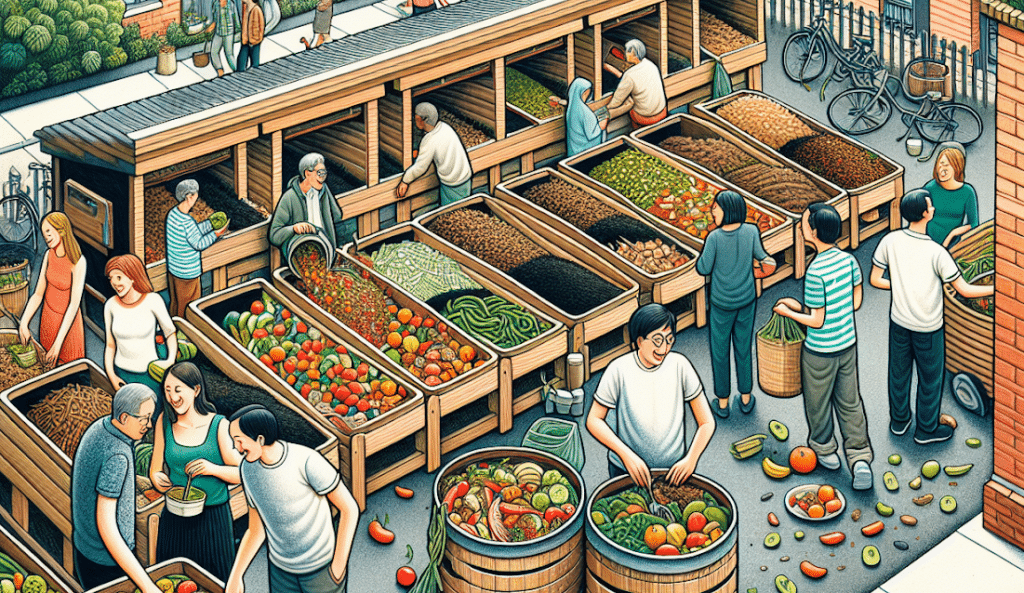
Composting is not a solitary affair; cities across the globe are recognizing its value and are establishing programs to facilitate and encourage it. From curbside services to community initiatives, urban residents have a variety of options to contribute to composting efforts.
We’ll examine how various city-specific programs make composting accessible to all residents.
Curbside Composting Services
Curbside composting services are a godsend for those without the space or inclination to compost at home. These programs, run by municipalities or private companies, collect food scraps and yard waste right alongside trash and recycling. It’s a convenient solution that ensures your organic waste is transformed into something valuable without you having to lift a rake or turn a pile.
Participation is growing in the cities that offer these services, showing that even in the urban jungle, residents are eager to contribute to the cycle of sustainability. This demonstrates the collective strive towards a greener future, achieving one bucket of food waste at a time.
Community Composting Initiatives
Community composting initiatives are another avenue for urban composters to make an impact. These shared facilities are often within residential areas, allowing neighbors to come together and contribute their organic waste to a collective composting effort. These initiatives are not solely about waste reduction; they also serve as a community-building exercise that fosters shared responsibility and promotes environmental stewardship.
In cities like Jersey City, residents can take their food waste to drop-off locations across the city, making it easier for everyone to participate in reducing waste and creating valuable compost for local use. These programs often provide compostable bags as an alternative to plastic bags, ensuring a clean and efficient process and showcasing the city’s commitment to facilitating environmentally friendly practices.
Benefits of Municipal Composting Programs
Municipal composting programs extend beyond mere waste management—they represent a strategic approach to enhancing the urban environment. By diverting organic materials like food scraps from landfills, these programs:
- Reduce the volume of landfill waste and the associated emissions
- Generate finished compost, which is a valuable resource
- Improve soil quality
- Aid in stormwater management
The City of Austin’s zero waste program is a prime example. It aims to divert 90% of materials from landfills by 2040. Such ambitious targets underscore the benefits that extend beyond individual gardens to the broader community. Municipal composting programs are an investment in the future of urban landscapes, making them more sustainable and resilient.
Common Challenges and Solutions in Urban Composting
Despite the many benefits, city composting comes with its set of challenges. Some of these challenges include:
- Limited space
- Unpleasant odors
- Attraction of pests
- Lack of knowledge about composting techniques
However, these obstacles are not insurmountable.
Urban residents can surmount these challenges by employing the proper techniques and solutions, such as using Bokashi bins for fermenting waste in compact spaces and maintaining an appropriate balance of compost materials to prevent odors. It’s about adapting the principles of composting to the urban environment, creating a sustainable cycle that fits within the constraints of city living.
Summary
As we’ve journeyed through the intricacies of city composting, it’s clear that this practice is more than just a means of waste reduction—it’s a powerful tool for urban sustainability. Every step, from selecting the right compost bin to utilizing the finished compost, is a stride towards greener cities and a healthier planet. Embrace the transformative power of composting and join the ranks of urban dwellers who turn waste into wealth and foster vibrant, life-sustaining environments.
Frequently Asked Questions
How do I choose the right compost bin for my small apartment?
For a small apartment, consider a worm bin, indoor composter with aeration holes, or Bokashi bin to manage composting effectively in a compact space. Choose a solution that best fits your needs.
Can I compost if I don’t have a backyard or garden?
Participating in curbside composting services or community composting initiatives is a convenient way to contribute to food scraps and support environmental sustainability, even if you don’t have a backyard or garden.
How can I tell if my compost is ready to use?
To check if your compost is ready, perform the bag test by sealing a sample in a plastic bag for 24 hours. If it smells earthy and isn’t heating up, it’s ready to use. You can also use the grow test by observing how beans and tomatoes grow in the compost.
What materials should I avoid adding to my compost pile to prevent pests?
To prevent pests, avoid adding meats, dairy, and fats to your compost pile. You can also deter pests by covering your food scraps with brown materials like shredded newspaper.
How does city composting contribute to sustainability?
City composting contributes to sustainability by reducing landfill waste, lowering methane emissions, creating nutrient-rich soil amendments, and managing stormwater runoff. Additionally, it fosters community engagement and supports local food systems.
